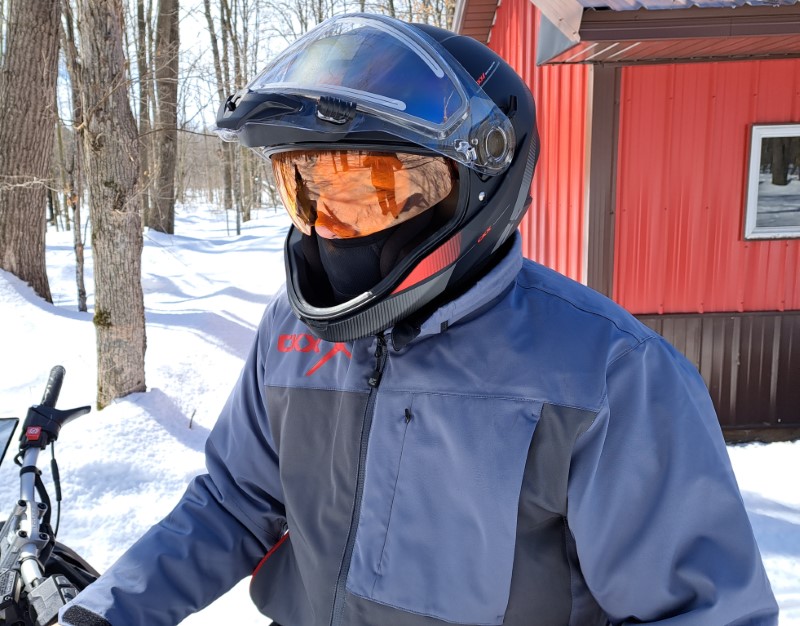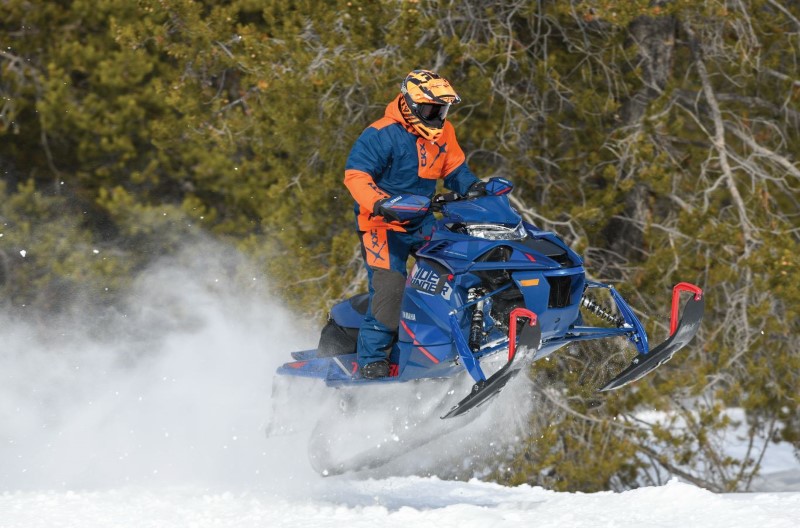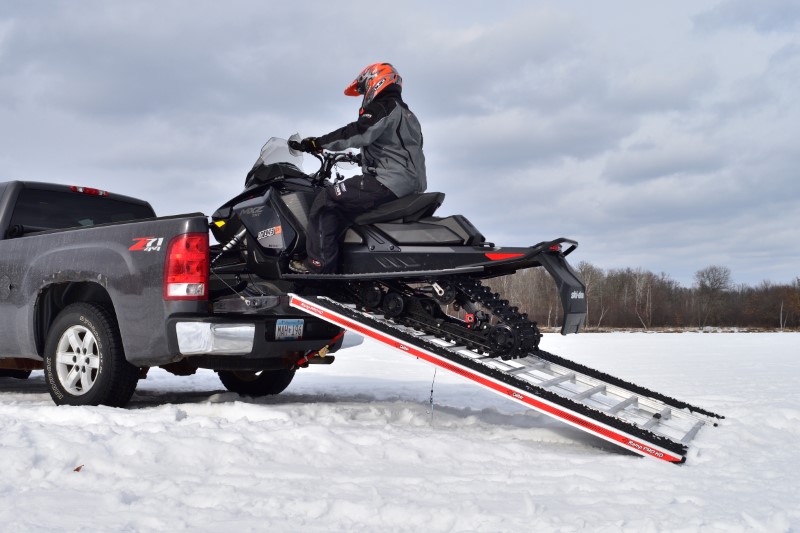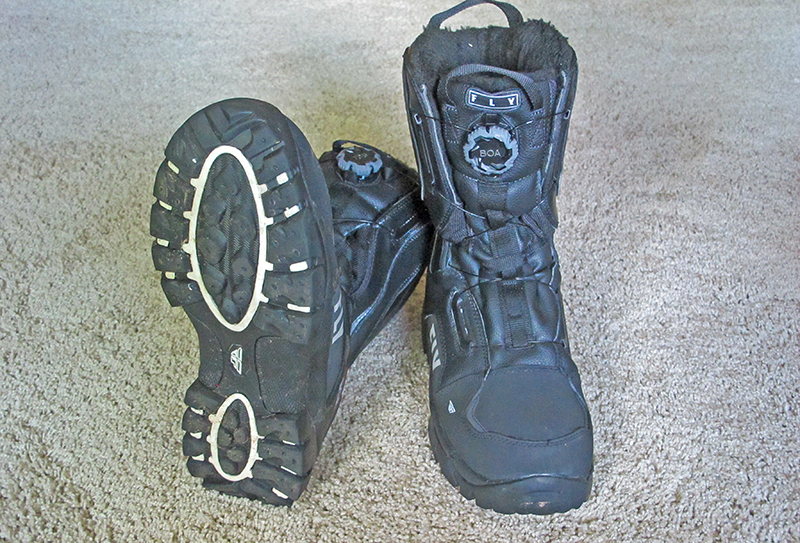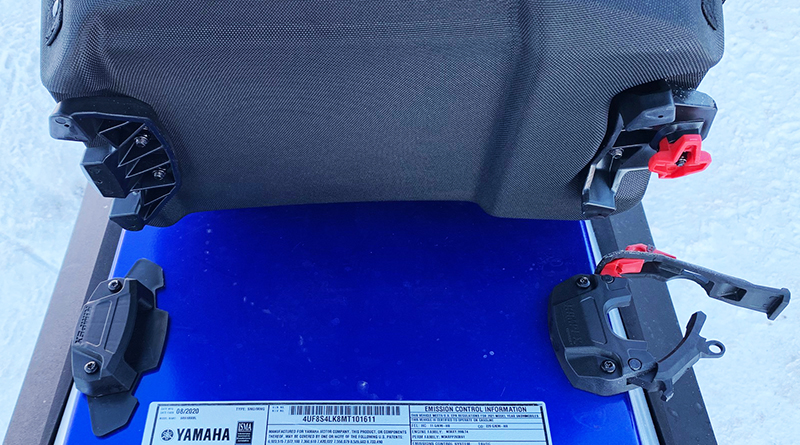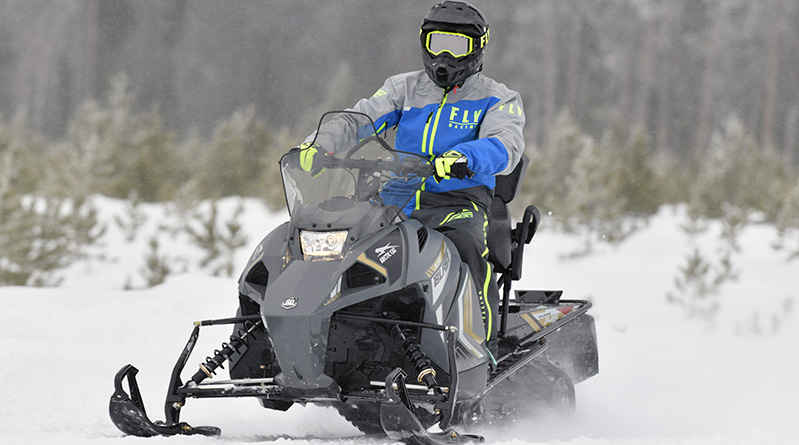Yamaha SR Viper snowmobiles hit hard on the bottom end of their powerband, like when accelerating out of the hole. And acceleration from within anywhere up to about 40 mph is quick and fun, too, but mid- through upper-range acceleration is flat when compared to 600cc two strokes – the engine class where Vipers compete in cross-country race circuits. Experience has shown that there isn’t as much top-end power as class-competitive machines, either.
Luckily for riders who want more performance and speed from their late-model Yamahas, D&D Racing has an easy-to-install hard part that helps them accelerate quicker and will bend the speedo needle a littler farther. This muffler also fits Arctic Cat 7000 Series ZR, M and XF models.

Top speed from our 2015 SR Viper S-TX DX demo in stock form was consistently 84 to 86 mph, according to the speedometer. With the D&D Quiet Tech muffler installed, top speed increased to 90 mph, and acceleration from the upper-middle to top-end felt more robust. With more pull from about 60 mph to the top end, the sled was more fun to ride. Pull from the upper-mid range to top-end is noticeably better with the D&D muffler. It accelerates from around 60 or 70 mph to top speed quicker, making the sled more fun to ride.
Mashing the throttle from dead starts or slow rolling starts caused the engine to sometimes briefly hit the rev limiter; this didn’t happen with the stock muffler, indicating that the Quiet Tech muffler lets the engine flow easier down low. Peak RPM in stock form ranged from 8800 to 9070, and peak RPM with the aftermarket silencer was consistently slightly more or less than 8900 when the engine was under load, so it was essentially the same as with the stock muffler. That meant we didn’t have to make clutching changes to hold the engine in the peak power zone.
Impressions of quality are high with the D&D Quiet Tech muffler. The chrome finish is cool and seems durable, and the company logos look good. It was easy to put in place behind the right side panel of our Viper, and it was easier to install than the stock muffler because the D&D muffler was physically smaller so we could reach in with a hand and guide it onto the mount near the chaincase.
While positioning the muffler in the chassis was easy, lining up the bolt holes on the muffler and flexible pipe that’s between the muffler and header took some coercion. Once the first of three bolts was pushed through a hole, though, holes for the other two bolts lined up perfectly. After the hardware and spring were installed, the muffler was stable and the outlet tube was centered within the hole in the belly pan.

One issue related to fit was discovered when we removed the muffler after the test: it contacted a plastic plug on the side of the engine, which caused the plug to melt and stick to the muffler until we wiggled it enough to break the bond. Dale Roes of D&D said he hadn’t experienced this problem during development and testing of the muffler, nor had any customers notified him of this issue. Hopefully ours was an isolated case that, had we realized it before we removed the muffler, probably could have been remedied by tweaking the spring hooks to pull the muffler away from the engine and create a slight air gap.
Another important consideration for exhaust components is their sound output. We used a smartphone sound level-testing app – one that, in the past, we’ve used in conjunction with an actual decibel meter and found to show the same test results for sound output – to measure decibels at idle and clutch engagement. With the sled parked on lightly packed snow and the measuring device held against the waist and the feet 1 meter away from the outlet, the stock muffler registered from 85 to 88 dB. At clutch engagement it was 89 to 91 dB. The D&D Quiet Tech muffler registered 90 to 93 dB and 94 to 96 dB, respectively.
If you want a little more “go” from your SR Viper or 7000 Series Arctic Cat, the D&D Quiet Tech muffler is a good, simple way to do it. The product seems well built and it was an easy way to make the sled more fun to ride and pick up a few miles per hour while maintaining a pleasant, quiet exhaust note that didn’t rattle the the neighbors out of bed when we loaded it on a trailer late at night.
Editor’s Note: Every issue of Snow Goer magazine includes in-depth sled reports and comparisons, aftermarket gear and accessories reviews, riding destination articles, do-it-yourself repair information, snowmobile technology and more! Subscribe to Snow Goer now to receive issues delivered to your door 6 times per year for a low cost.

